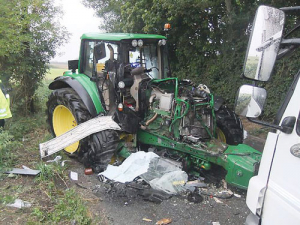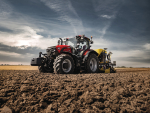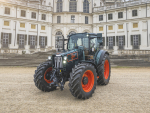Statistics show that over the last two decades, 80% of fatalities in the rural sector can be attributed to the use of farm vehicles- with the last three years seeing that rise to 90%. Those same statistics suggest that the simple action of “clunk-click” by using a seatbelt in a tractor, UTE or UTV can make the difference between life or death, all for a two-second investment of your time.
Many deaths are caused by “rollovers”, and whilst modern tractors and UTV’s are much safer than those of yesteryear by being fitted with rollover protection, there is an inherent need to remain secured, and within the structure, to be safe. The alternative is to be thrown around within the safety structure and suffer injury, or in the worst case, being thrown from the “safe-zone” in the event of an accident.
Wearing seatbelts always, in any type of farm vehicle, should become an instinct, done in the same way that we reach for a seatbelt when we head out onto the highway in our cars-is there any real reason why it shouldn’t be?
Wearing seatbelts should be a part of every farm or enterprises Health and Safety discussions, with family, workers and visitors, and should also be discussed with visiting contractors, by explaining it is part of your farm’s safety policy. Likewise, farm owners, managers and foremen must lead by example by always using a seatbelt- with no exceptions.
Going back over those statistics also helps dispel another popular myth- that young, inexperienced “hot-heads” are the most frequent age group in serious or fatal accidents. The statistics, based on the belief that experience counts, should lead us to believe that fewer experienced people might be killed in these accidents, but the numbers show that over half the fatalities are over 50 years of age, and doing something they have done many times before. Maybe it’s because of a “she’ll be right” attitude, the inability to identify possible risks, or because “we’ve done it like that” for far too long. Given that the average farmer in New Zealand is around 57 years old, those afore-mentioned attitudes, and a lack of change, will continue to see them making the news headlines for all the wrong reasons.
In closing, I forgot to mention a further sector that also uses seatbelts extensively- that’s patients in wheelchairs or on stretchers that are being loaded into ambulances-don’t be one of them!

















